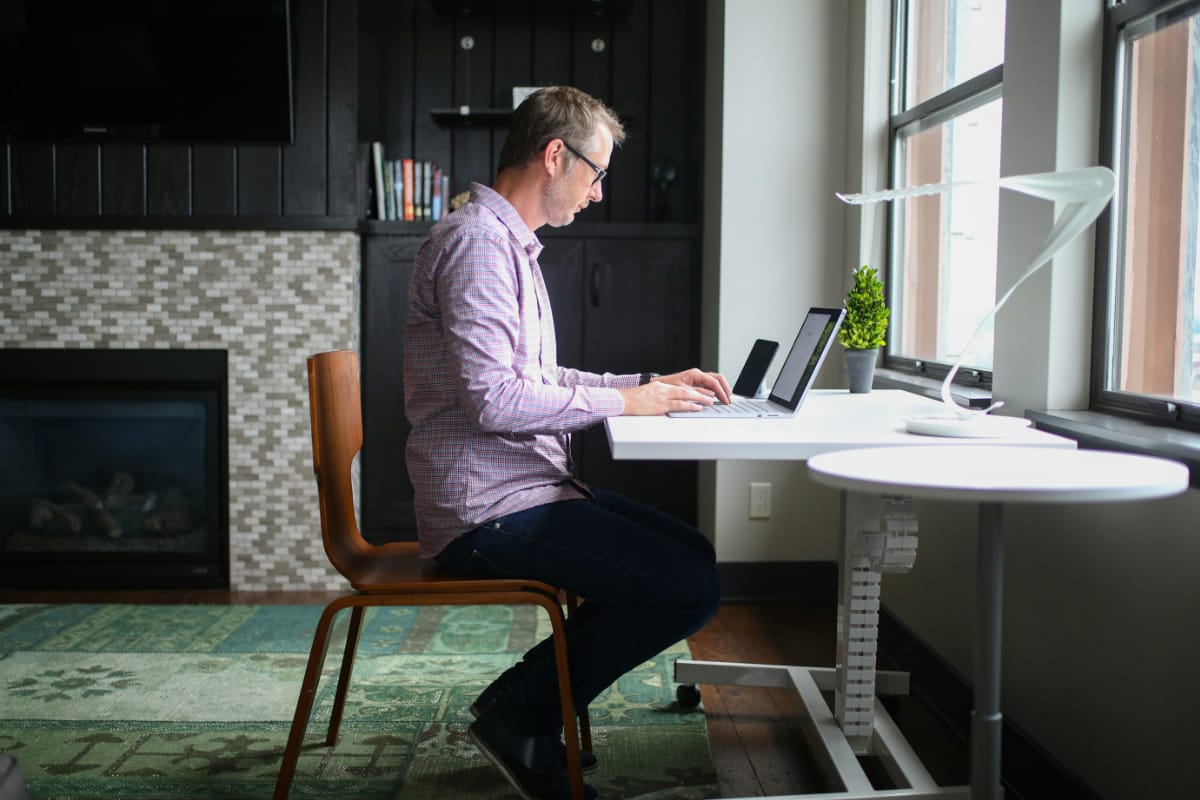Get your butt up: The negative effects of sitting
Kyra Nichols
•
As someone who spends the majority of her time studying the human body, one of the biggest problems I see is the detrimental effects of people being sedentary. Unfortunately, sitting is unavoidable. Whether it be at work, in the car, or at home, we tend to spend the majority of our day in a seated position. Although sitting itself is not bad, when it becomes excessive it can have some harmful effects on our health. Thankfully, there are some solutions to help counteract these negative effects.
The Effects of Sitting
Many different things can happen when someone spends most of their day sitting. Here are just a few of them:
Decreased Range of Motion
Range of motion is how much a certain body part can move around a fixed point. For example, if I was analyzing your knee’s range of motion, I would ask you to bring your heel to your buttocks and then straighten out your knee.
Sitting all day can cause your body to get “stuck” in that position. If your muscles are not regularly being stretched, they shorten over time. This is what we call a contracture. In extreme cases (usually those who are fully bed-bound) it is seen that the muscle never returns to a normal resting length, leaving the knee, hip, or foot in the bent position. When you spend the majority of your day sitting without taking breaks to stretch out, your muscles are getting used to being in that bent position. Your body will only perform the tasks that you ask of it, so if you are never asking (or very rarely asking) your legs to stretch out, the muscles will only perform the tasks of being bent/slouched (like sitting).
Another reason for decreased range of motion is a lack of muscle strength. If you are not regularly using your muscles to move, your muscles will never build up the strength needed to be able to move in the ways they should be able to.
Joint Pain/Stiffness
You know when you’re trying to fall asleep and no matter how much you toss and turn you cannot get comfortable? Maybe laying a certain way hurts your back? Sitting can have the same effect on your joints. Whenever we spend too much time in one position, especially if we're tense, we can start to experience pain. How often do you find your shoulders by your ears or your jaw shut tight when you're seated? Just like when you’re trying to fall asleep, switching the way you are positioned can do wonders for your body. This build-up of muscle tension not only shows increased joint pain/stiffness, but also increased psychological stress.
Tips to Help
Exercise
The American College of Sports Medicine recommends at least 150 minutes of moderate-intensity exercise a week (this boils down to about 45 minutes 3 times a week - the perfect Rise workout). Spending this time moving each week helps to build up strength, stretch out your muscles, and improve your mood while decreasing stress.
Set a timer
If you spend the majority of your day seated, it is extremely important to take breaks. A great way to do this is to set a timer to stand or walk around for 10 minutes. I like to get up at least once an hour, using this time to go to the bathroom, refill my water bottle, or just walk up and down the hall. Even just standing up and stretching has been shown to help reset your brain, helping to give you more clarity when you go back to work.
Get a standing desk
If this is an option for you, a standing desk is a great way to stand up during the day while still being able to get work done. Another great, similar option is a walking pad or under-the-desk bike, allowing you to get some added movement in all while you work.
Take walks during your lunch break
This one is pretty self-explanatory. If your lunch break allows, get up and walk. Whether it be around the hallways or outside, walking can help decrease joint pain, increase your range of motion, improve mood, decrease stress, and more.
Stretch
Lastly, stretching out your body while at work can greatly help decrease the negative effects of sitting. Bringing your arms overhead, across your body, or straightening out your legs all can help.
This is not an all-inclusive list of ways to help decrease the negative effects of being sedentary, but it’s a great starting point for many of us. As I stated before, sitting is unavoidable. However, with small changes and increased movement, you will start to see a positive change in your health.
Coach Kyra